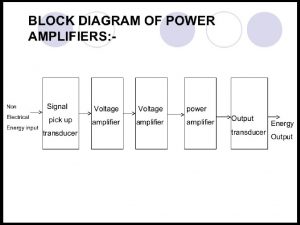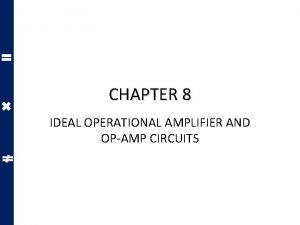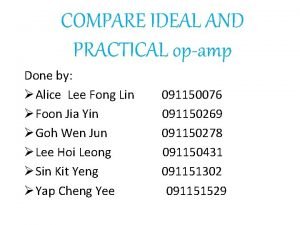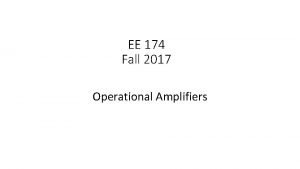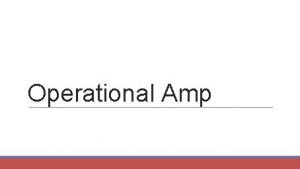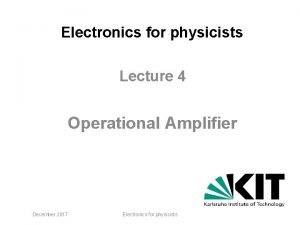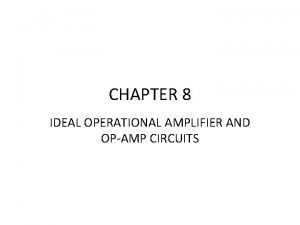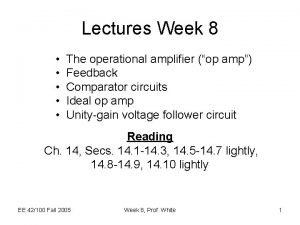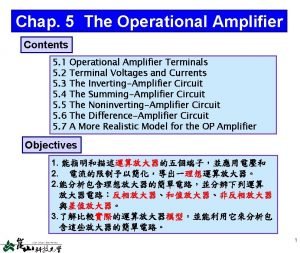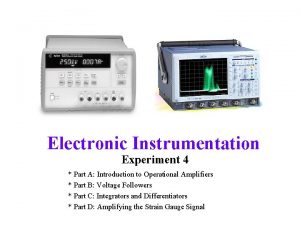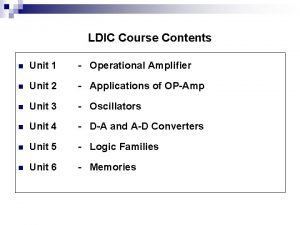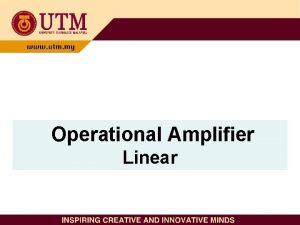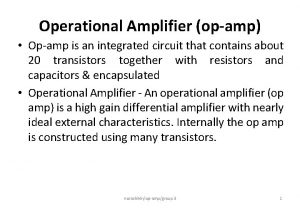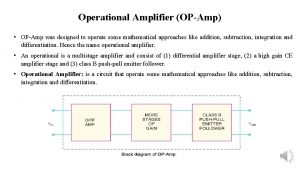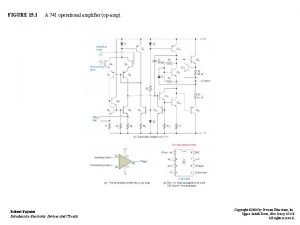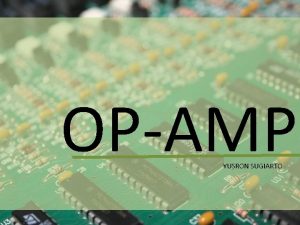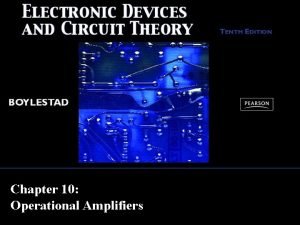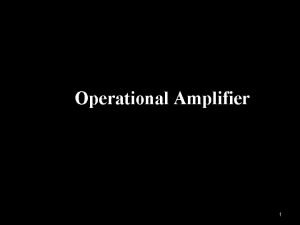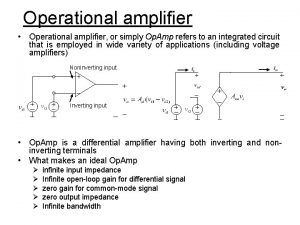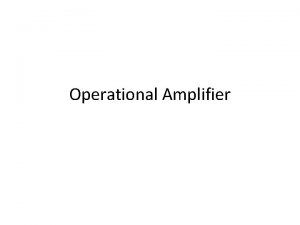Operational Amplifier OpAmpA 741 Opamp is a Linear













- Slides: 13

Operational Amplifier (Op-Amp)-μA 741 Op-amp is a Linear Integrated Circuit used to amplify dc as well as ac signals and to perform mathematical operations such as addition, subtraction, integration and differentiation. • The input-output relationship of the op-amp is Vo = A (Vn – Vi) where, A is the open loop gain of the op-amp. 1 Notch 74 1

Op-Amp (contd…) A Op-Amp Schematic Symbol 741 Op-Amp Pin Diagram • An ac signal (or dc voltage) applied to the non-inverting terminal produces an in-phase (or same polarity) signal at the output. • An ac signal (or dc voltage) applied to the inverting terminal produces an 180 o out-of-phase (or opposite polarity) signal at 2 the output.

COMPARISON BETWEEN CHARACTERISTICS OF AN IDEAL AND REAL OP-AMP (μA 741) Parameters Ideal Real Open Loop Gain A ∞ 105 Input Impedance Ri ∞ 2 MΩ Output Impedance Ro 0 75 Ω 3

Equivalent Circuit of an Op-Amp Vo = A(v+ - v-) • The output voltage is directly proportional to the algebraic difference between the two input voltages. vo Voltage Gain (A) of the Amplifier where Vin=V+ – V- 4

Virtual Short So, (1) The voltage between V+ and V is zero V+ = V As V 1 and V 2 are not shorted but are at equal potential, therefore called virtual short. (2) The current into both V+ and V terminals is zero. I+ = 0 ; I- = 0 5

Inverting Amplifier If RF = Rin, Vout = - Vin Non-Inverting Amplifier Due to virtual short Vin = V 1 6

Example Find the closed loop gain of the following inverting amplifier circuit. Solution: Example If Rin is 10 kΩ, what value of Rf is required to produce a non-inverting amplifier with voltage gain of 25? Solution: 7

Voltage Follower (Unity Gain Buffer) • In non-inverting amplifier if we make the feedback resistor, Rf = 0 then the circuit will have a fixed gain of "1" and is called a Voltage Follower. • As the input signal is connected directly to the non-inverting input of the amplifier the output signal is not inverted resulting in the output voltage being equal to the input voltage Vout = Vin • The input impedance of the voltage follower circuit is very high, typically above 1 MΩ as it is equal to that of the operational amplifiers input impedance. 8

IF Integrator V 2 = 0 Integrator Circuit +1 V -1 V 9

Differentiator V 2 = 0 Differentiator Circuit 10

Summing Amplifier 11

Example: Find the output voltage of the following Summing Amplifier circuit. 12

Difference Amplifier Va Due to virtual short Va = Vb Vb Difference Amplifier Circuit When R 1 = R 3 and R 2 = R 4 the transfer function becomes: If R 1 = R 2, then Thus the amplifier becomes a Unity Gain Differential Amplifier. 13
 Dc path
Dc path Difference between voltage and current
Difference between voltage and current Operational amplifier inverter
Operational amplifier inverter Ideal and practical op amp
Ideal and practical op amp Operational amplifier history
Operational amplifier history Apa itu operational amplifier
Apa itu operational amplifier Operational amplifier
Operational amplifier Op amp circuits examples
Op amp circuits examples Operational amplifiers
Operational amplifiers Ideal opamp
Ideal opamp Operational transconductance amplifier circuit
Operational transconductance amplifier circuit Conclusion operational amplifier
Conclusion operational amplifier Operational amplifier experiment
Operational amplifier experiment Lm351 op amp
Lm351 op amp

